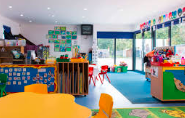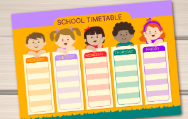Creating a child-friendly learning space is essential for nurturing curiosity, independence, and a love of learning. Whether at home or in an educational setting, the environment plays a vital role in supporting young learners’ development. A well-designed space can encourage exploration, focus, and creativity while offering comfort and safety.
Why Environment Matters
Children thrive in spaces where they feel secure, welcomed, and inspired. A thoughtfully arranged learning area helps set routines, promote self-directed learning, and reduce distractions. When children can access age-appropriate materials and feel ownership of their space, they become more engaged and confident learners.
Key Elements of a Child-Friendly Learning Space
1. Safety First
Use soft edges on furniture, secure shelves to walls, and ensure all materials are non-toxic. Outlets should be covered, and walkways kept clear to prevent accidents. Safety allows children to explore freely without unnecessary risks.
2. Accessible Materials
Place books, art supplies, puzzles, and learning tools within easy reach. Clear storage bins and low shelves empower children to choose their own activities and clean up independently, promoting responsibility and independence.
3. Comfortable and Inviting Atmosphere
Incorporate natural light, cozy rugs, and calming colors to create a welcoming environment. Comfortable seating like bean bags or floor cushions can offer flexible options for reading or quiet time.
4. Zones for Learning and Play
Divide the space into specific areas—such as a reading nook, art corner, and building zone. This structure helps children understand expectations and supports a variety of learning styles.
5. Personal Touches
Let children participate in decorating their space. Display their artwork or photos to give a sense of pride and ownership. These personal elements can make the environment feel more meaningful and joyful.
Encouraging Growth Through Environment
A well-designed space encourages self-expression, emotional growth, and social interaction. It fosters a love for learning by providing opportunities for both structured and free play. Regularly refreshing materials and layouts can keep the space exciting and aligned with a child’s developmental needs.
Final Thoughts
Designing a child-friendly learning space is more than arranging furniture—it’s about creating an environment that supports exploration, creativity, and emotional well-being. With thoughtful choices, caregivers and educators can craft spaces that spark joy and inspire learning every day.


